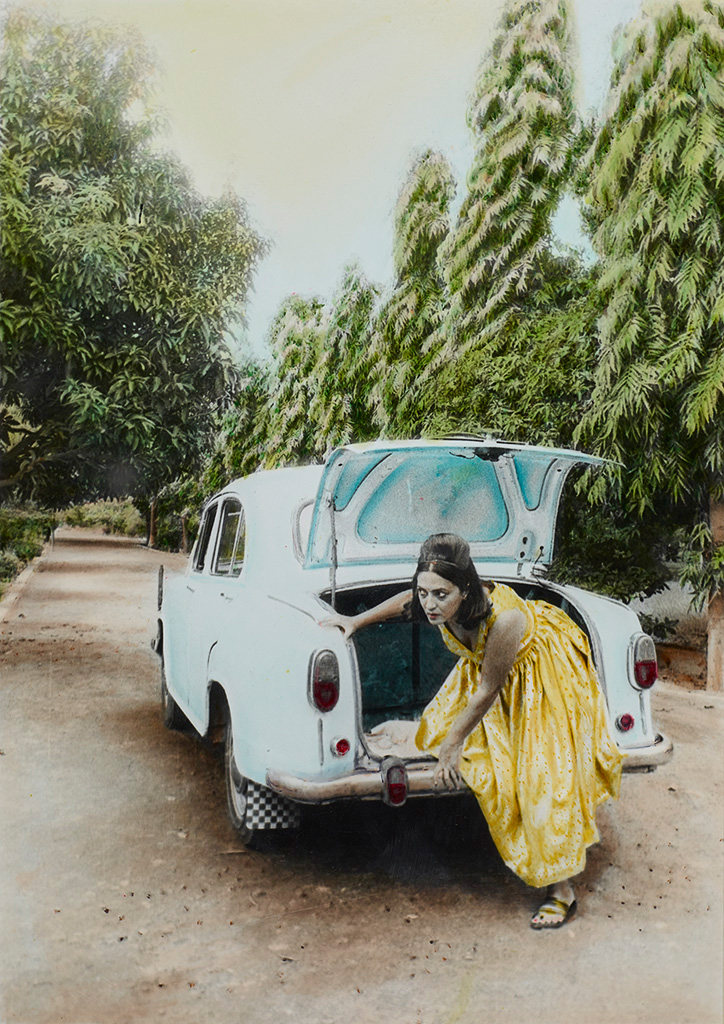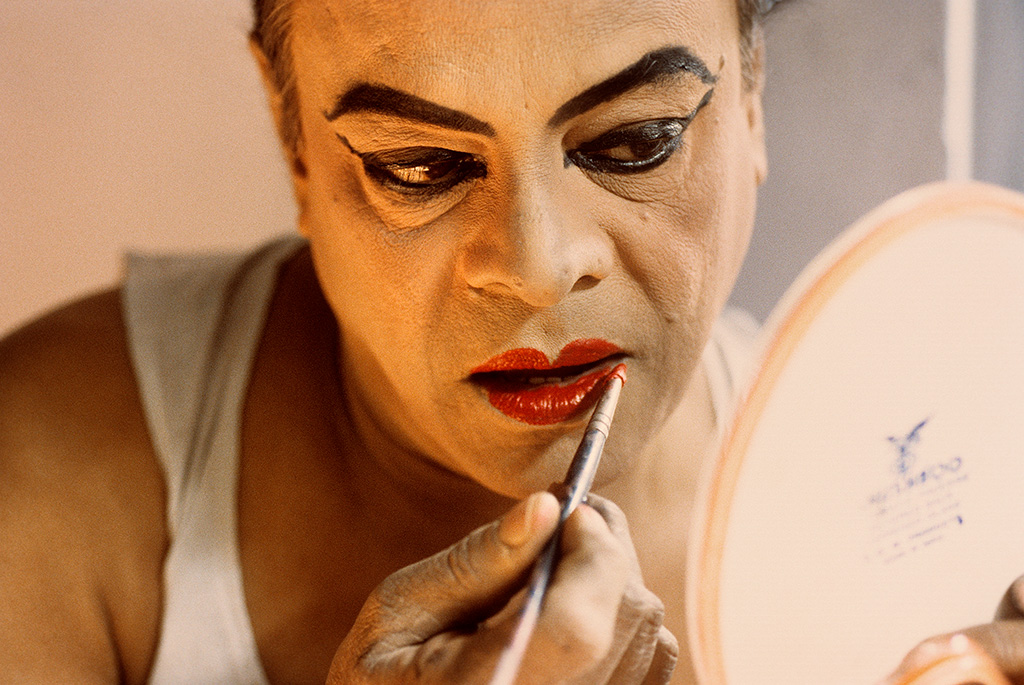The history and trajectory of conceptual photography in India is explored in a new exhibition at the Vancouver Art Gallery.
The collection of more than 100 works that comprise “Moving Still: Performative Photography in India”, begins at the turn of the 19th century with Maharaja Sawai Ram Singh II. The “Photographer Prince of Jaipur” was one of the country’s first prolific photographers, and the first—through portraits of his courtesans—to capture Indian women on film.
These images begin the viewer’s journey through nearly two centuries of gender, identity, and religious expression—topics that are explored through the eyes of 13 artists, all deeply rooted in India.
“He was also doing a lot of role-playing,” says Diana Freundl, associate curator of Asian art at the VAG, of Ram Singh II. Freundl co-curated the exhibition with New Delhi-based art critic and independent curator, Gayatri Sinha.
Freundl points out a monochrome image of two young girls in costume. “Here she’s dressed in male attire, as a military or regal servant. Ram Singh would have this gender play with the women of this time.” The maharaja also photographed visitors to his court and took self-portraits, often disseminating messages through his own image printed on postcards.
As you move through the first two rooms of the exhibition, the theme of personal expression stands out. Umrao Singh Sher-Gil’s self-portraits, taken some fifty years later, illustrate a sense of being, as well as of evolving. Impressively clothed, he poses next to his telescope or studying in his office. In other portraits he stands wearing only a loincloth and in solitude, referencing his yogic and spiritual practices. In doing so, he asks the question of who Sher-Gil really was—or perhaps, who are we all?
Themes shift from the ostensibly personal to the vividly communal with artist Gauri Gill’s series focusing on papier-mâché artists of the Kokna tribe in Maharashtra. Community members don traditional Indian stage masks and re-enact aspects of village life for Gill’s camera. Wanting to step away from the relationship that photography has to colonialism in India, Gill’s art showcases her continued belief in collaboration and active listening. Each photograph captures a scene of its subject’s own making.
Questions around social and cultural—versus political—approaches to gender expression in India are central to the collection. Prominent documentarian Naveen Kishore followed legendary theatrical female impersonator Chapal Bhaduri throughout the 1970s, generating discussion on sexual identity in a shifting India; Sunil Gupta’s 2007 fictive photo series illustrates how queer identities in India are openly expressed during private parties and within virtual spaces.
Tejal Shah, who identifies as ‘they’, aims to disassociate from gender completely by focusing on non-dualist philosophy. The room showcasing their work features two film projections with accompanying deep sonics. “[Shah is] trying to make reference to the idea that the world is interconnected; a cycle as opposed to having a hierarchy,” Freundl explains. “And that extends itself to gender identification.”
“Moving Still” concludes with the works of one of India’s leading figures in conceptual photography, Pushpamala N. Also a writer, critic, curator, and sculptor, she has an expansive history of photography exploring the practice in India and its colonial roots. One striking image uses a pair of compasses to measure its subject’s head, recalling 19th century anthropometrics.
In another set of photographs, Pushpamala N employs nostalgic film-colourization techniques by hand-tinting her own 1998 analog prints that mimic mid-century romance and, Freundl notes, “play on roles and characters that are depicted in cinema in India.”
Sunhere Sapne, from this artist’s 1998 Golden Dreams series, is featured prominently on the cover of the exhibition catalogue. This hardback book also highlights essays by both curators elaborating on the historical relevance of performance photography as an artistic medium in India.
Moving Still: Performative Photography in India runs at the Vancouver Art Gallery, until September 2.
Read more of the Arts.

















